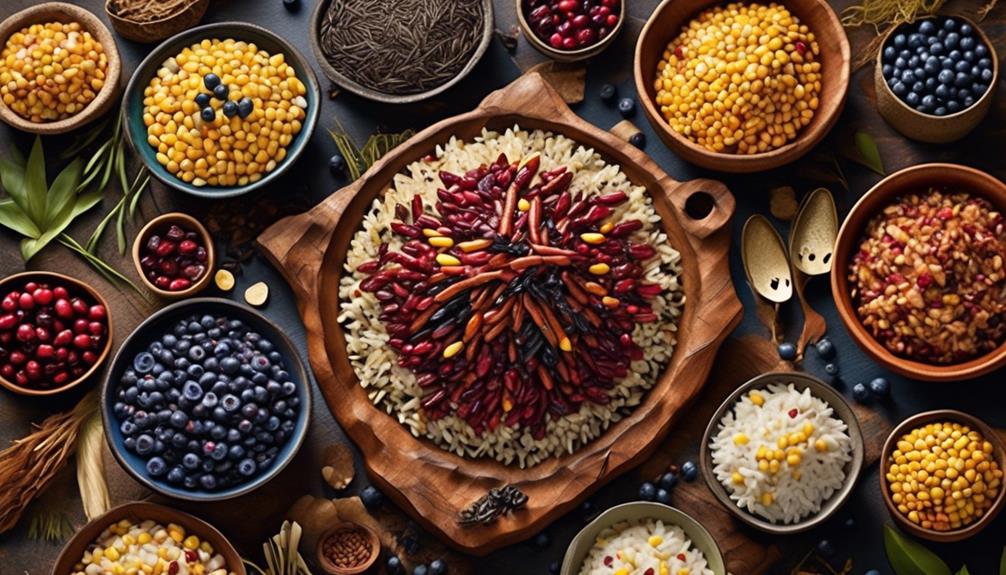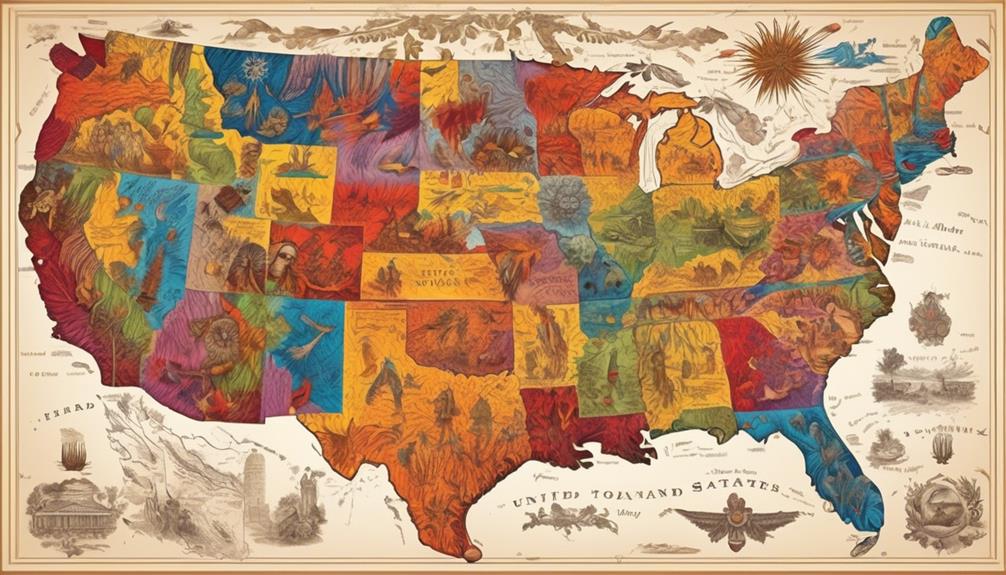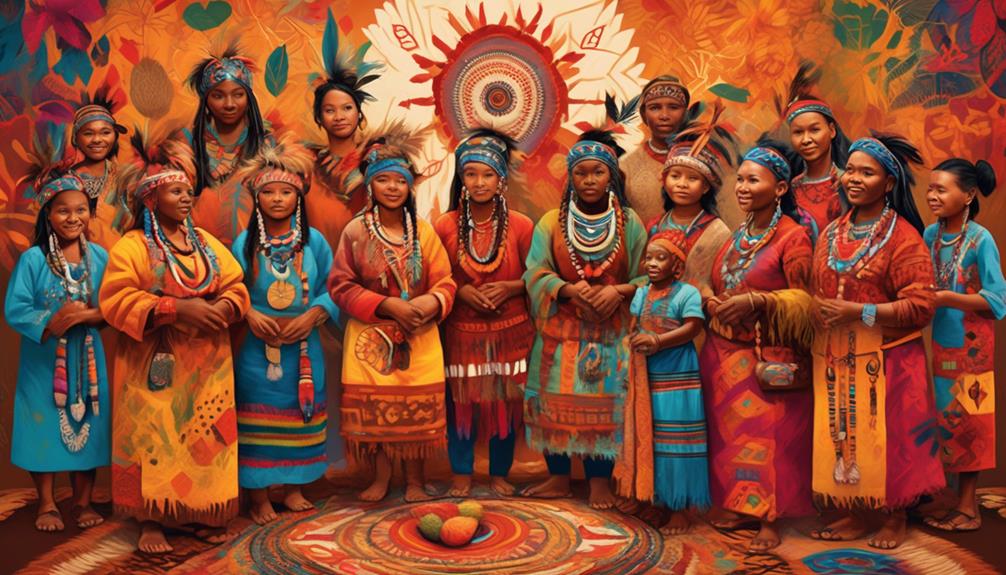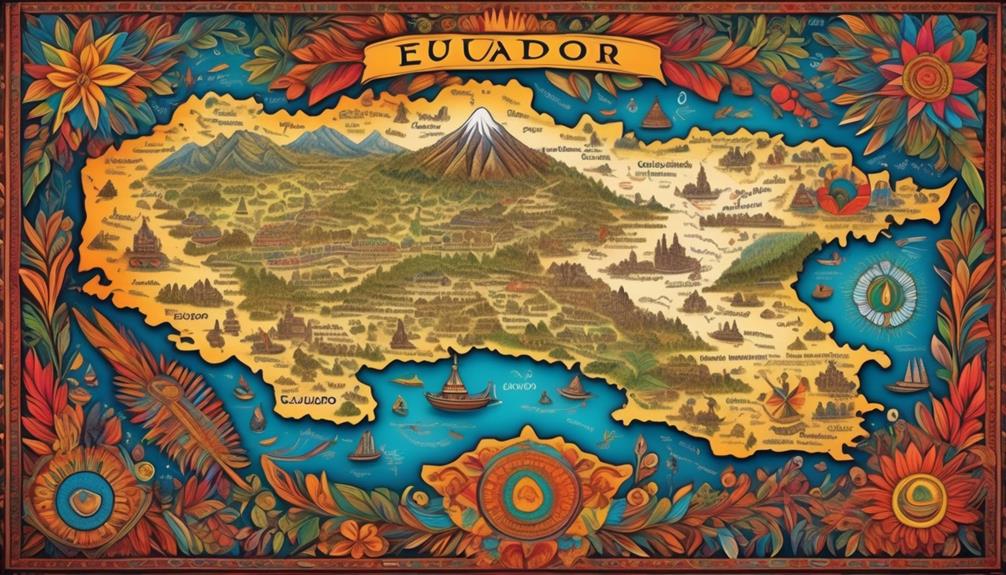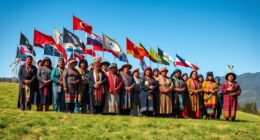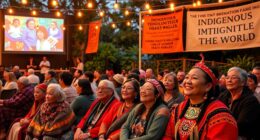When gathering around our modern dining tables, it’s easy to overlook the rich culinary history that North America holds.
The foods indigenous to this land are not just sustenance; they are a testament to the diverse and bountiful ecosystems that have sustained indigenous peoples for centuries.
From the sacred trio of the Three Sisters to the fiery kick of chiles and peppers, the culinary landscape of North America is as varied as the land itself.
Join us as we uncover the deep-rooted traditions and flavors that have shaped the indigenous foodways of this continent.
Key Takeaways
- Corn, beans, and squash are the traditional crops that form the cornerstone of many Indigenous North American diets, with each plant serving a specific purpose in their farming practices.
- Wild rice is a staple in the diet of Northern Native communities and holds cultural and nutritional significance, symbolizing spiritual and communal ties in Indigenous communities.
- Berries and fruits, cultivated through traditional methods, reflect the deep connection between Indigenous peoples and the land, ensuring the health of the land and providing a bountiful harvest.
- Chiles and peppers have long been used in Indigenous cuisine, adding depth and complexity to traditional dishes and valued for their medicinal and spiritual properties. Seafood and game are integral elements of the Indigenous North American diet, reflecting the deep connection and respect Indigenous communities have for the environment and its gifts.
The Three Sisters: Corn, Beans, and Squash
The Three Sisters, consisting of corn, beans, and squash, form the cornerstone of many Indigenous North American diets. Traditional farming practices involved planting these three crops together, creating a mutually beneficial system. Corn provides a structure for the beans to climb, while the beans add nitrogen to the soil, benefiting all three plants. Meanwhile, squash spreads along the ground, providing shade to prevent weeds and retaining moisture in the soil. This sustainable and efficient method of farming not only ensured a bountiful harvest but also enhanced the soil's fertility for future crops.
Culinary symbolism is deeply intertwined with the Three Sisters. Beyond their practical agricultural benefits, these crops hold cultural and spiritual significance for many Indigenous communities. They're often referred to as 'sisters' to symbolize the inseparable bond between them, reflecting the interconnectedness of all living things. The Three Sisters also feature prominently in traditional stories and ceremonies, emphasizing their importance in Indigenous culture.
Wild Rice: A Northern Native Staple

A staple in the diet of Northern Native communities, wild rice holds cultural and nutritional significance, reflecting the deep connection between the land and Indigenous food traditions.
Traditional harvesting of wild rice involves a deep understanding of the plant's natural habitat, with hand-harvesting techniques passed down through generations.
The significance of wild rice extends beyond sustenance; it's deeply interwoven with cultural practices and ceremonies, symbolizing spiritual and communal ties.
The grain plays a vital role in Indigenous communities, not only as a dietary staple but also as a means of preserving and passing down traditional knowledge and values.
Wild rice, or manoomin as it's known in Ojibwe, has been an integral part of our cultural identity for centuries.
The careful and respectful harvesting of this grain is a tradition that honors our connection to the land and the teachings of our ancestors.
The cultural significance of wild rice goes far beyond its nutritional value, embodying our heritage and way of life.
As we continue to uphold the tradition of wild rice harvesting, we honor the legacy of our people and the enduring importance of this sacred grain.
Berries and Fruits: Nature's Sweet Offerings
Abundant in the natural landscape, berries and fruits provide a delectable array of nature's sweet offerings. Berry picking is a seasonal tradition that has been passed down through generations. The act of foraging for wild berries, such as blueberries, blackberries, and raspberries, connects us to the land and the traditions of our ancestors. The rich flavors and vibrant colors of these berries are unparalleled, making them a prized part of Indigenous cuisine.
Cultivating fruit using sustainable practices has been a cornerstone of Indigenous agriculture for centuries. Traditional methods, including intercropping and companion planting, have allowed for the cultivation of a variety of fruits, including cherries, plums, and cranberries. These sustainable practices not only ensure the health of the land but also provide a bountiful harvest for communities.
The diverse array of berries and fruits indigenous to North America reflects the deep connection between Indigenous peoples and the land. As we continue to celebrate and honor these natural offerings, it's essential to recognize the traditional knowledge and sustainable practices that have sustained these gifts for generations.
Chiles and Peppers: Spicing Up Indigenous Cuisine
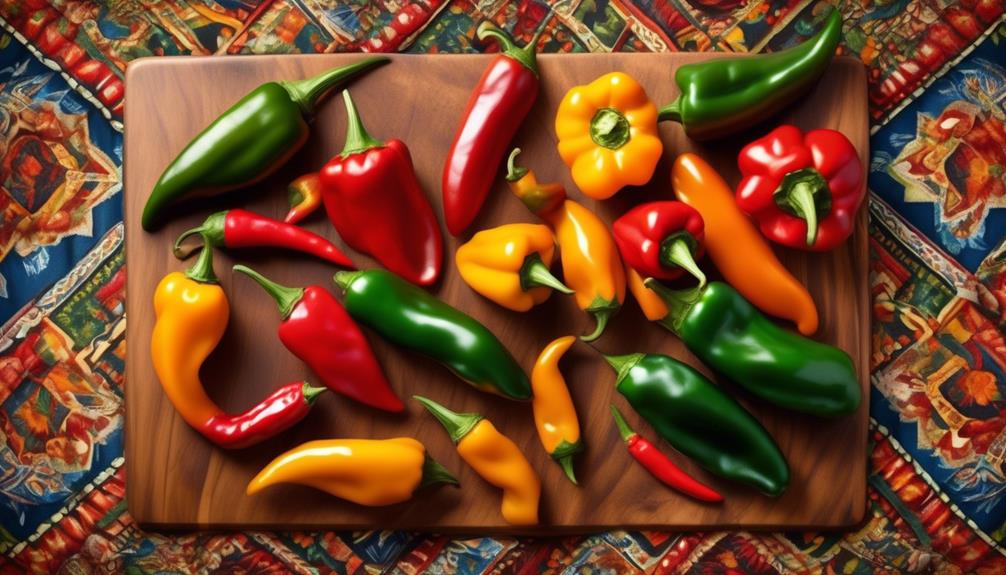
Picking wild berries has been a cherished tradition, and now we're turning up the heat with the addition of chiles and peppers to our Indigenous cuisine. Culinary traditions of North America have long included the use of chiles and peppers, which hold significant historical significance in Indigenous cultures. These flavorful additions not only bring heat but also depth and complexity to our traditional dishes.
Chiles and peppers have been a staple in Indigenous cuisine for thousands of years. They were cultivated and used in various forms, from fresh to dried, and added a unique dimension to the culinary traditions of different Indigenous tribes across North America. The historical significance of chiles and peppers in Indigenous cuisine goes beyond flavor; they were also valued for their medicinal and spiritual properties.
The use of chiles and peppers in Indigenous cuisine has left a lasting impact on the culinary landscape of North America. Today, they continue to be celebrated and incorporated into modern dishes, showcasing the enduring legacy of Indigenous culinary traditions.
Seafood and Game: Sustenance From Land and Water
Sourcing sustenance from both land and water, we've long relied on seafood and game as integral elements of our Indigenous North American diet. Our coastal traditions involve shellfish gathering, a practice deeply rooted in our heritage. From the Pacific Northwest to the Eastern Seaboard, our ancestors skillfully harvested clams, oysters, and mussels, recognizing the bountiful resources provided by the sea.
Hunting techniques, such as tracking game, have been passed down through generations, ensuring the sustainability of our food sources. The art of tracking and hunting deer, elk, bison, and other game animals has been a fundamental aspect of our cultural identity, providing us with nourishment and honoring the natural world.
Our deep connection to the land and water is reflected in the way we gather and hunt for seafood and game, embodying our respect for the environment and the gifts it offers.
Frequently Asked Questions
What Are the Nutritional Benefits of the Indigenous Foods Mentioned in the Article?
The nutritional benefits of indigenous foods are numerous. They offer a rich source of vitamins, minerals, and antioxidants, contributing to overall health and well-being. Culinary techniques such as roasting, steaming, and fermenting help preserve these nutrients.
Understanding the nutritional value of indigenous foods is important for promoting healthy eating habits and preserving traditional culinary practices.
How Have Indigenous North American Communities Traditionally Prepared and Cooked These Foods?
Traditional cooking methods used by indigenous North American communities include techniques such as roasting, boiling, steaming, and fermenting. These methods are integral to preserving the nutritional value and flavor of indigenous foods.
Indigenous food traditions emphasize the use of local, seasonal ingredients and sustainable harvesting practices. By incorporating these cooking methods and traditions, indigenous communities have maintained a deep connection to the land and its bounty for generations.
Are There Any Traditional Rituals or Ceremonies Associated With the Cultivation and Consumption of These Indigenous Foods?
Traditional practices associated with indigenous food cultivation and consumption hold deep cultural significance for our communities. These practices are often intertwined with rituals and ceremonies, reflecting our reverence for the land and the bounty it provides.
Community celebrations and seasonal gatherings centered around these foods serve as a way to honor our heritage and strengthen our connections to our ancestors and the natural world.
How Have the Cultivation and Consumption of These Indigenous Foods Evolved Over Time Within Indigenous Communities?
Over time, the cultivation and consumption of indigenous foods within our communities have evolved, blending traditional practices with modern adaptations.
The evolution of cultivation reflects our cultural significance, preserving ancestral wisdom while embracing innovation.
For instance, the traditional practice of seed saving has transformed into community seed banks, safeguarding our heritage crops.
This metaphor of growth embodies the dynamic nature of our food traditions, rooted in the past, flourishing in the present.
Are There Any Current Efforts to Preserve and Promote the Use of These Indigenous Foods in Modern Cuisine?
Efforts to preserve and promote indigenous foods in modern cuisine are crucial for sustainability.
Through advocacy, we aim to raise awareness and celebrate the rich culinary heritage of North America.
Promoting the use of indigenous foods not only honors tradition but also supports local communities and fosters a deeper connection to the land.
These efforts are essential in preserving cultural identity and promoting a more sustainable and diverse food system.
Conclusion
In conclusion, the rich tapestry of indigenous North American cuisine is like a vibrant mosaic, woven together with the Three Sisters, wild rice, berries, chiles, seafood, and game.
Each ingredient tells a story of resilience, tradition, and connection to the land.
Just like a patchwork quilt, these foods represent the diverse cultures and flavors that make up the beautiful tapestry of North America.
Mary is a passionate writer who brings creativity and a fresh perspective to our team. Her words have the power to captivate and inspire, making her an essential contributor to our content. Mary’s commitment to storytelling and dedication to promoting Indigenous culture ensures that her work touches the hearts of our readers. We’re fortunate to have her as part of our team.
